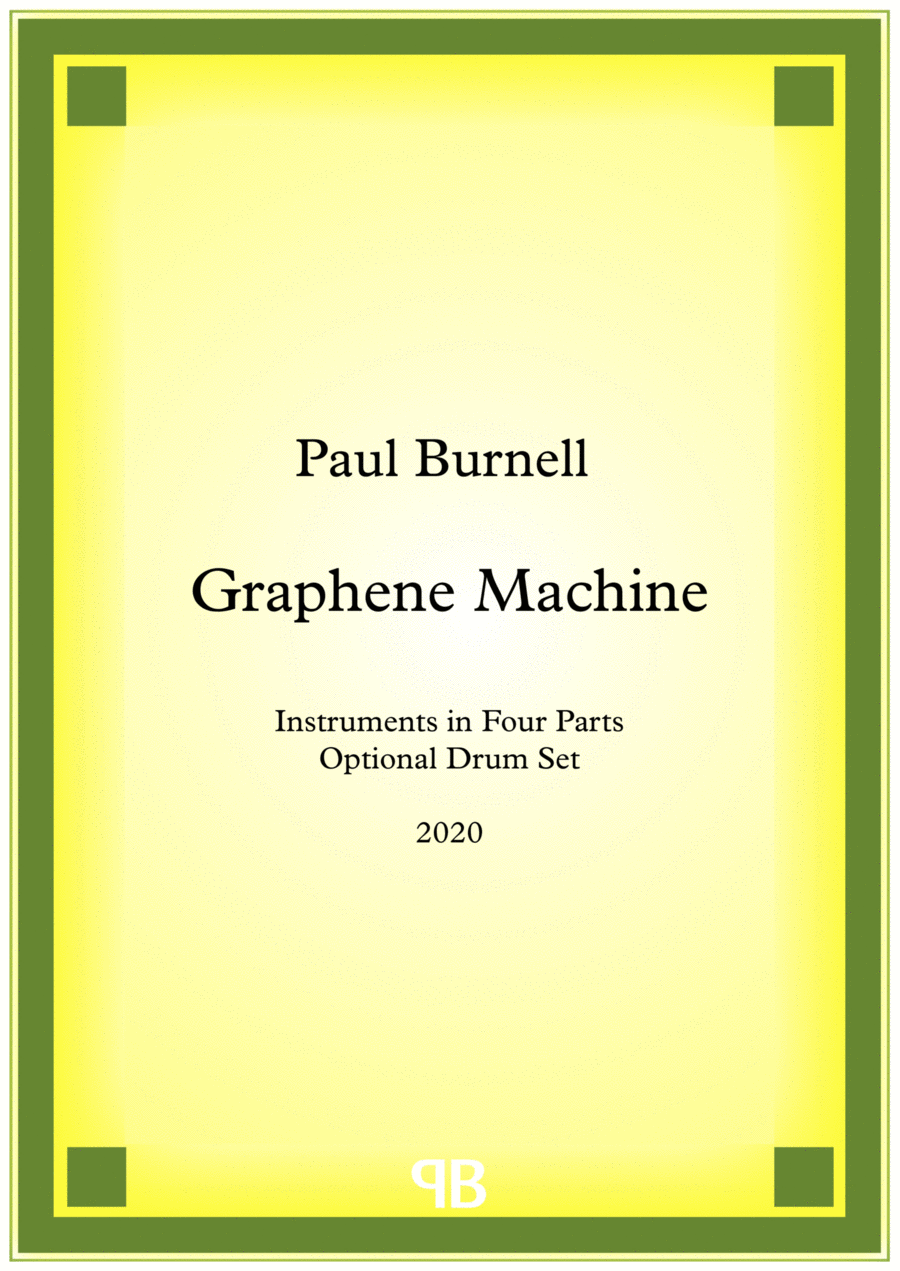Woodwind Ensemble,Woodwind Quartet - Level 3 - Digital Download SKU: A0.835863 Composed by Paul Burnell. Contemporary. 83 pages. Paul Burnell #6290665. Published by Paul Burnell (A0.835863). Graphene MachineComposed Paul Burnell 2020For Instruments in Four Parts with optional drum setScore in CDuration without repeats 4:15, duration with repeats 4:55If repeats are omitted use 2nd time indications.Graphene Machine is suitable for multiple quartet combinations with parts available (and potential instrumentations suggested) as follows:Part 1: C, Bb, Eb (Flute, Oboe, Alto Recorder, Eb Clarinet, Bb Clarinet, Trumpet, Violin 1)Part 2: C, Bb, G, Eb (Alto Flute, Oboe, Tenor Recorder, Bb Clarinet, Alto Saxophone, Trumpet, Violin 2)Part 3: C, Bb, Eb, F (Bb Clarinet, Bass Recorder, Alto Saxophone, F horn, Violin 3, Viola)Part 4: C, Bb, F (Bassoon, Great Bass Recorder, Tenor Saxophone, F Horn, 'Cello)Optional: Drum Set - Kick Drum or damped Floor Tom, Snare Drum, High Hat, Crash Cymbal, Ride CymbalAlternately, 'found' percussion object equivalents may be played.Part 4 may be played an octave lower than written - using the available 'Bass clef up 8' part.Any other appropriate instruments, even if not suggested above, may play.The Con Sord./Mute indications are for string and brass instruments.The optional unpitched air sounds notated with x note heads can be performed on wind and brass instruments. Other instrument types may improvise an equivalent unpitched sound.Bracketed note heads indicate alternate note where the associated unbracketed note is out of range. Programme note:Graphene is a form of carbon consisting of sheets just one atom thick, with the atoms arranged in a honeycomb-shaped lattice. In relation to its thickness, it is about 100 times stronger than steel. Graphene conducts heat and electricity very efficiently and is nearly transparent.'Graphene Machine' reflects Graphene's characteristic of extreme thinness and relative strength through the contrast of quiet delicate sounds with forceful dynamic playing. The piece also features interlocking six-note patterns that were inspired by Graphene's hexagonal atomic structure.
